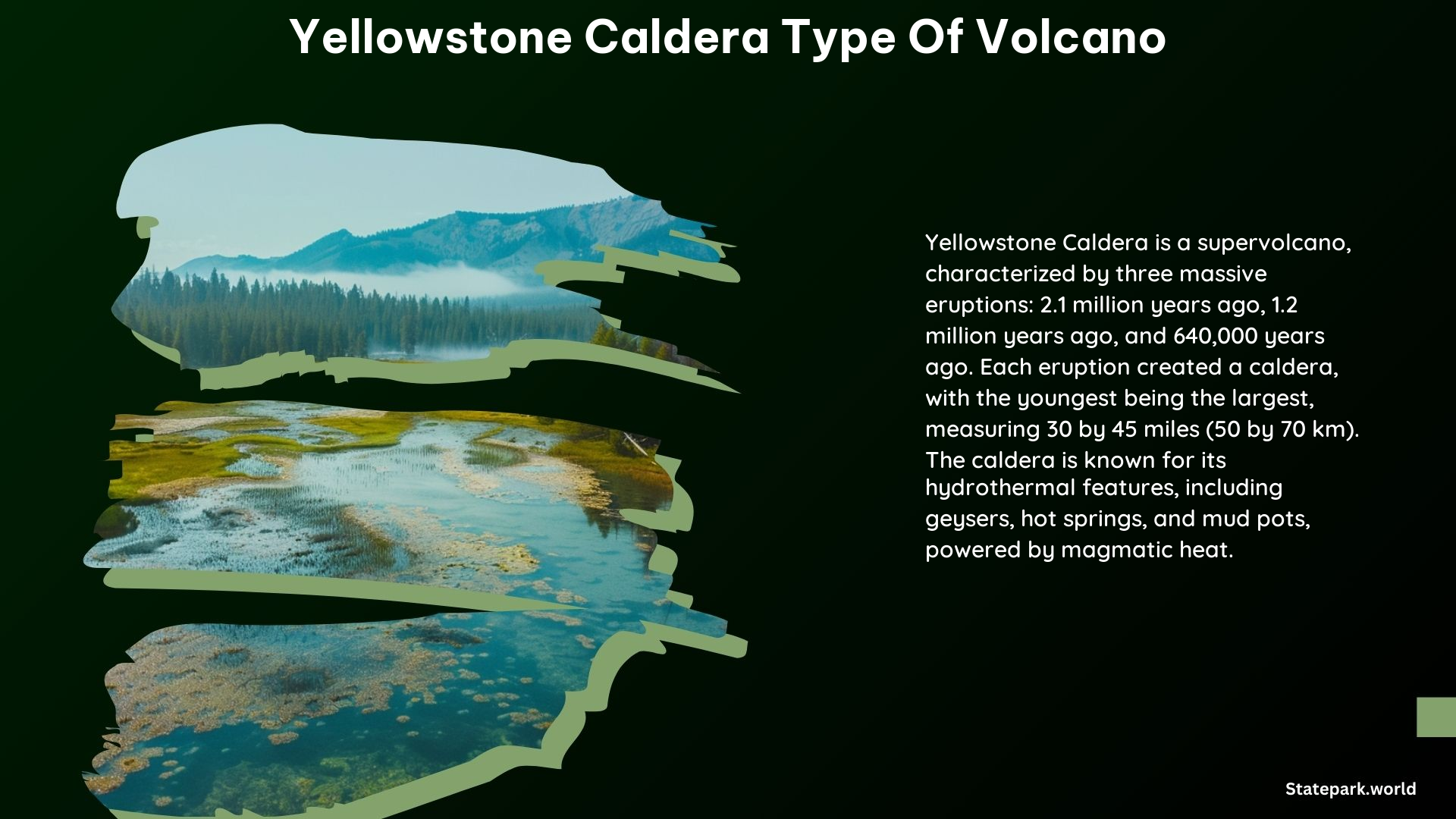The Yellowstone Caldera is a type of supervolcano, characterized by its immense size and potential for extremely powerful eruptions. This geological wonder, located within the boundaries of Yellowstone National Park, has a fascinating history and continues to captivate visitors from around the world.
What is the Yellowstone Caldera?
The Yellowstone Caldera is a large, circular depression that was formed by the collapse of the land surface following a massive volcanic eruption. This caldera measures approximately 30 by 45 miles (50 by 70 km) in size, making it one of the largest calderas in the world.
Yellowstone’s Eruption History

The Yellowstone Caldera has a long and turbulent history of volcanic activity, with three major eruptions occurring over the past 2.1 million years. These eruptions were so powerful that they created the massive calderas we see today.
| Eruption Event | Approximate Date | Eruption Volume |
|---|---|---|
| First Eruption | 2.1 million years ago | 2,450 cubic km |
| Second Eruption | 1.3 million years ago | 280 cubic km |
| Third Eruption | 630,000 years ago | 1,000 cubic km |
The most recent eruption, which occurred about 630,000 years ago, is considered the largest and most powerful of the three. This eruption created the Yellowstone Caldera as we know it today.
Magmatic Composition and Activity
The Yellowstone Caldera is composed of a diverse range of volcanic rocks, including basalt, andesite, and rhyolite. This variety in magma composition indicates a complex and dynamic volcanic system.
Despite the lack of major eruptions in recent history, the Yellowstone Caldera remains an active volcanic system. Ongoing magmatic activity beneath the surface is responsible for the numerous hydrothermal features found within Yellowstone National Park, such as geysers, hot springs, and mud pots.
Monitoring and Threat Potential
The Yellowstone Volcano Observatory closely monitors the Yellowstone Caldera for any signs of increased volcanic activity. This includes tracking earthquakes, ground deformation, and volcanic gas emissions. While the likelihood of a major eruption in the near future is considered low, the Yellowstone Caldera is still classified as a high-threat volcano due to its potential for catastrophic events.
Visiting the Yellowstone Caldera
Yellowstone National Park offers visitors the unique opportunity to explore the Yellowstone Caldera and its remarkable volcanic features. From the iconic Old Faithful geyser to the colorful hot springs, the park provides a window into the dynamic geological processes that have shaped this remarkable landscape.
As you explore the Yellowstone Caldera, remember to respect the power of this supervolcano and follow all safety guidelines provided by the National Park Service. With proper precautions, you can safely enjoy the breathtaking beauty and geological wonders of this one-of-a-kind natural wonder.
References:
– Britannica. (2024). Yellowstone Caldera. Retrieved from https://www.britannica.com/place/Yellowstone-Caldera
– National Park Service. (2021). Volcano – Yellowstone National Park. Retrieved from https://www.nps.gov/yell/learn/nature/volcano.htm
– U.S. Geological Survey. (n.d.). Yellowstone. Retrieved from https://www.usgs.gov/volcanoes/yellowstone
– Yellowstone Park. (n.d.). Yellowstone is a Volcano (more specifically, a Supervolcano). Retrieved from https://www.yellowstonepark.com/things-to-do/yellowstone-volcano/
– Global Volcanism Program. (n.d.). Yellowstone. Retrieved from https://volcano.si.edu/volcano.cfm?vn=325010
